An Audio Networking Update After Infocomm 2019: Audinate's Dante and AVB/TSN/Milan
Sunset over the excellent Hillstone restaurant In Orlando—Nothing Network Related Here
It's become an annual tradition-since 2009 I've been writing about networking from a live sound perspective after catching up from Infocomm. (Note: In this overly jargon-filled post I'm assuming you're familiar with the A/V networking landscape; if not, much of the terminology I use here was defined in previous write ups). You can see last year's entry here, and the whole series here. In short, I was an early and ardent supporter of AVB (now called TSN (now called Milan?)), and then Audinate came out with Dante which really took over a huge part of the audio networking market, and now has hundreds of licencees. Last year at Infocomm, a number of key AVB live sound manufacturers announced the formation of Milan, meant to clean up some of the under defined things in AVB and make it more useful.
Last year, I wrote: “ … I would describe the state of the A/V networking world to be pretty much the same as last year, with some interesting developments on the horizon. The lion's share of the products on at the show running audio over ethernet are doing so with Audinate's Dante; a few (important) companies are running AVB. “ I could write that sentence today adding that we seem (in the live sound world) for the near future to be heading further into a two-network world, with a convenient and practical dividing line: the mixer/speaker system boundary.
All the partners currently featured on the Milan website are speaker manufacturers:
So the leaders include include Adamson, d&b, L’Acoustics, Meyer, and RCF, and Avid is on the list. There were rumors at the show that there would soon be a Milan console, so I would put 2 and 2 together and guess that that will happen (of course Avid also makes an option card with Dante). But if we’ve got to have two networks in our industry, this is not a bad break point: Dante currently owns the console, stage box, mics, processors, etc; Milan/AVB will own the high end speaker space.
Three things still bother me about the Milan effort. First, I don’t know what it is supposed to be called any more. AVB? TSN? Milan? That’s a minor thing that they can fix. Second, as far as I can tell, there still will be no unified patch screen. As I wrote last year, “nothing in the existing standard offers the user anything like the plug and play patching convenience we already have today with Dante (of course I've written a lot about that already). Even in Milan, from what I understand, the way the patching will done--which is what the users actually interact with--is still left up to individual manufacturers (or maybe a third party?) to handle. For competitive reasons there's not really much incentive for clean, unified plug and play multi-manufacturer signal routing that is consistent for the user, and I doubt it will happen any time soon in AVB systems, if ever.“
And the answer I got about this at Infocomm is that there would be some open source solution that on which anyone can develop. That may be noble and flexible, but that does not necessarily lead to usability. I would be more impressed by the whole effort if the companies in Milan offered one single unified cross-platform patching solution. And this brings me to the third thing: these brilliant engineers (some of whom are friends of mine) still don’t seem to get that they are, in the end, developing their products for end users. One of the greatest things about Dante—and, I would argue, what most users actually think Dante actually is—is the unified patch screen offered by Dante Controller. This patch software is the same no matter what Dante enabled product you are patching. If Meyer has a patch software and L’Acoustics has another and d&b has another then this just becomes yet another quagmire of multiple interfaces. Can we make it work? Sure. Is that really better for the end user? I don’t think so. I’ve spent too much time already on job sites with a bunch of people standing around the laptop trying to get things patched and this situation won’t make that any easier.
And related to this is that in all the Milan materials and presentation they continue to act as if there aren’t already tens of thousands of Dante products in the world. In slide after slide, the Milan presentation outlined the functionality we already have today with Dante, but it was presented as if Milan was some radical new innovation, rather than an incremental improvement on a nearly 10 year old networking standard that still requires special functionality in ethernet switches. They also act as if configuring a Dante system is some monumental task needing massive amounts of IT knowledge, which just isn’t true for the vast majority of our applications. This all feels a bit disingenuous to me.
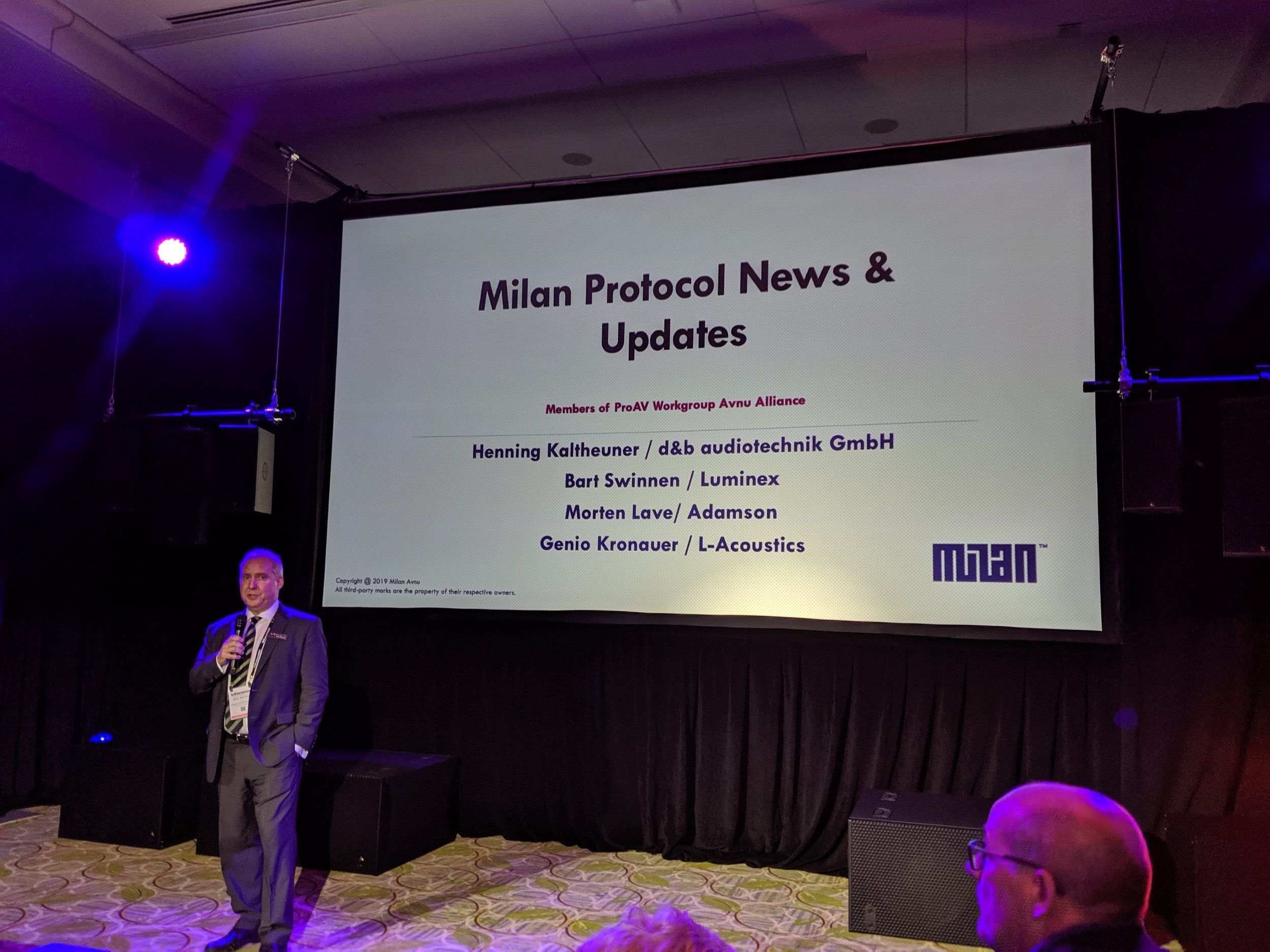
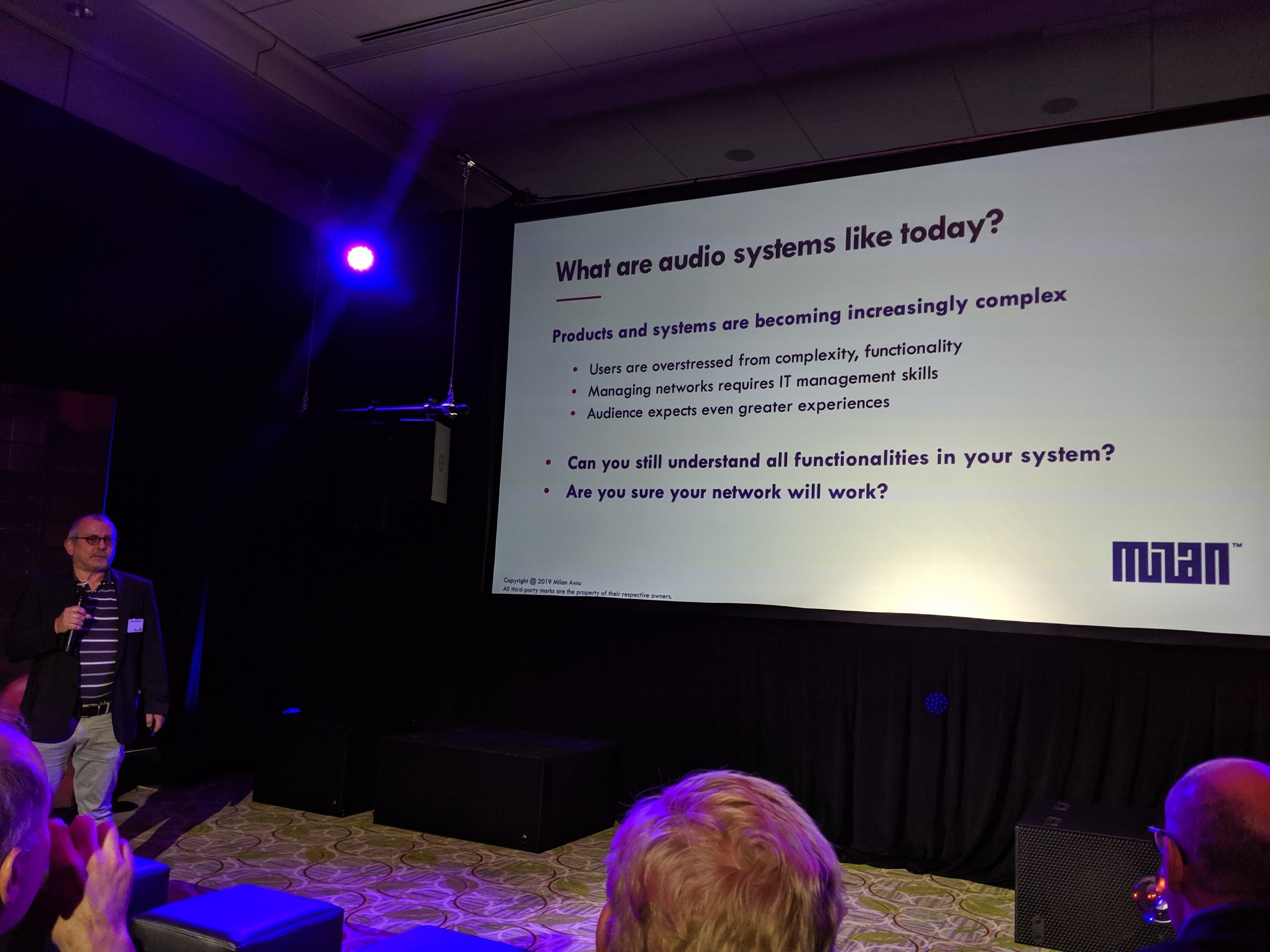
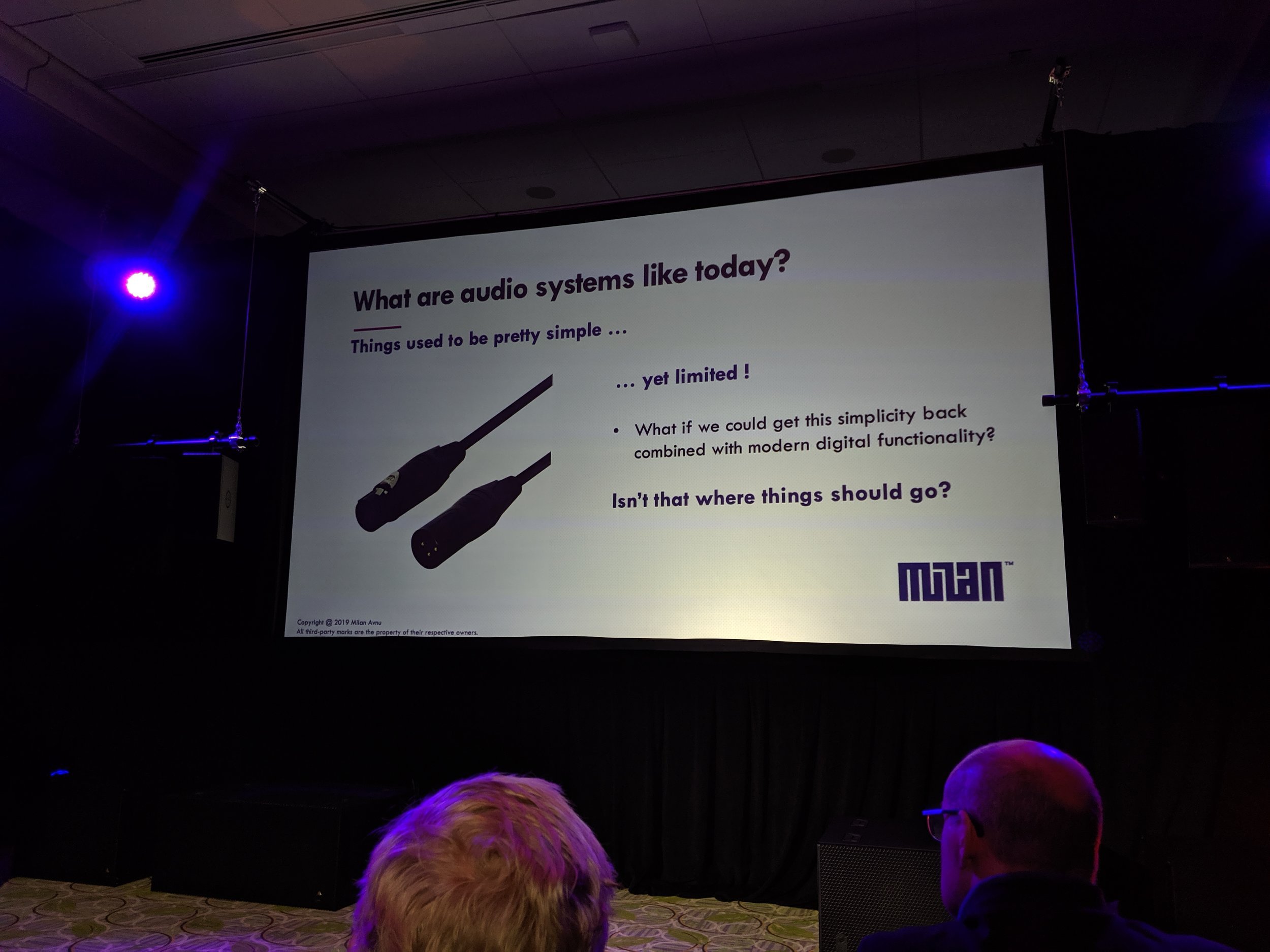
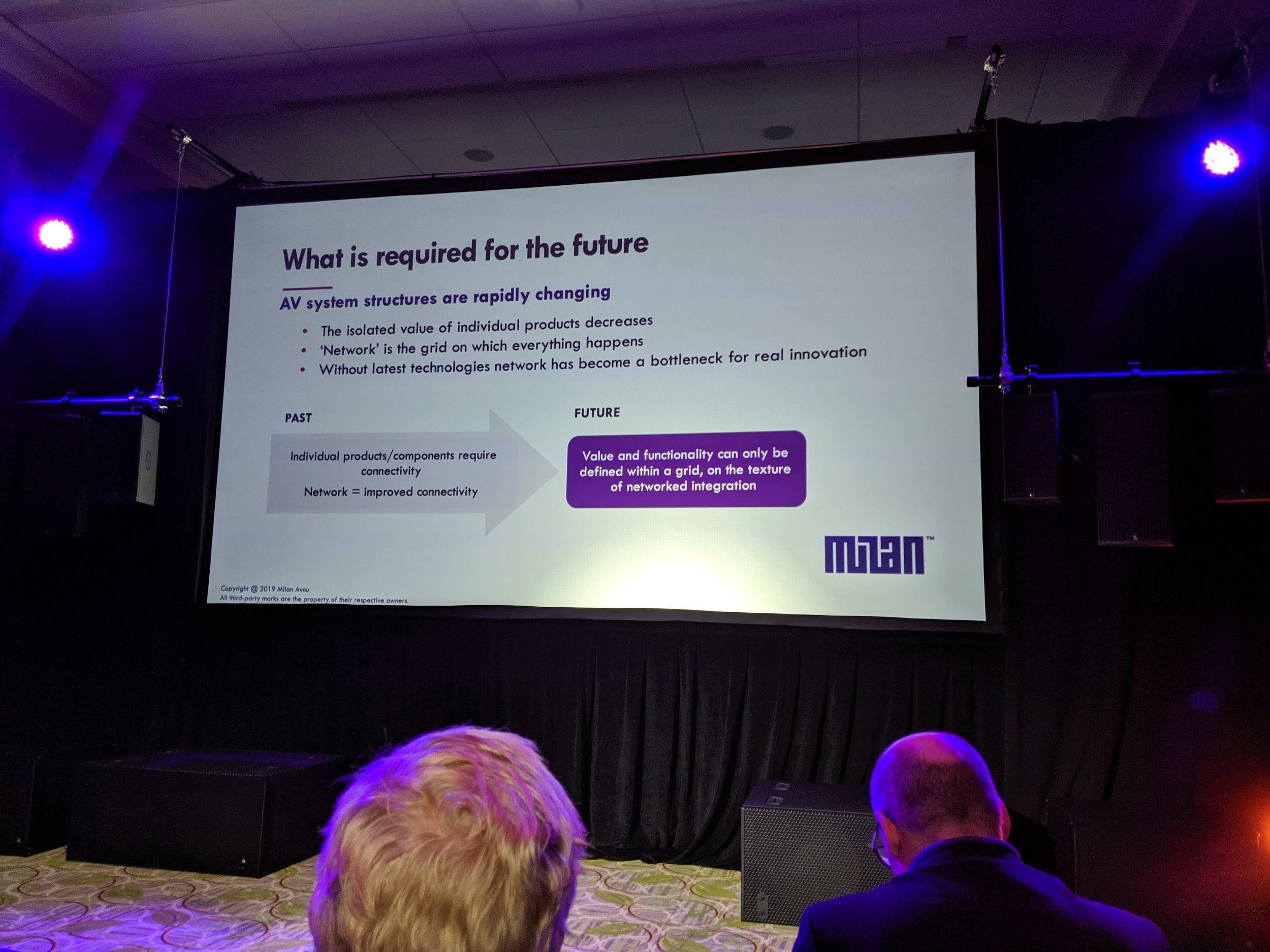
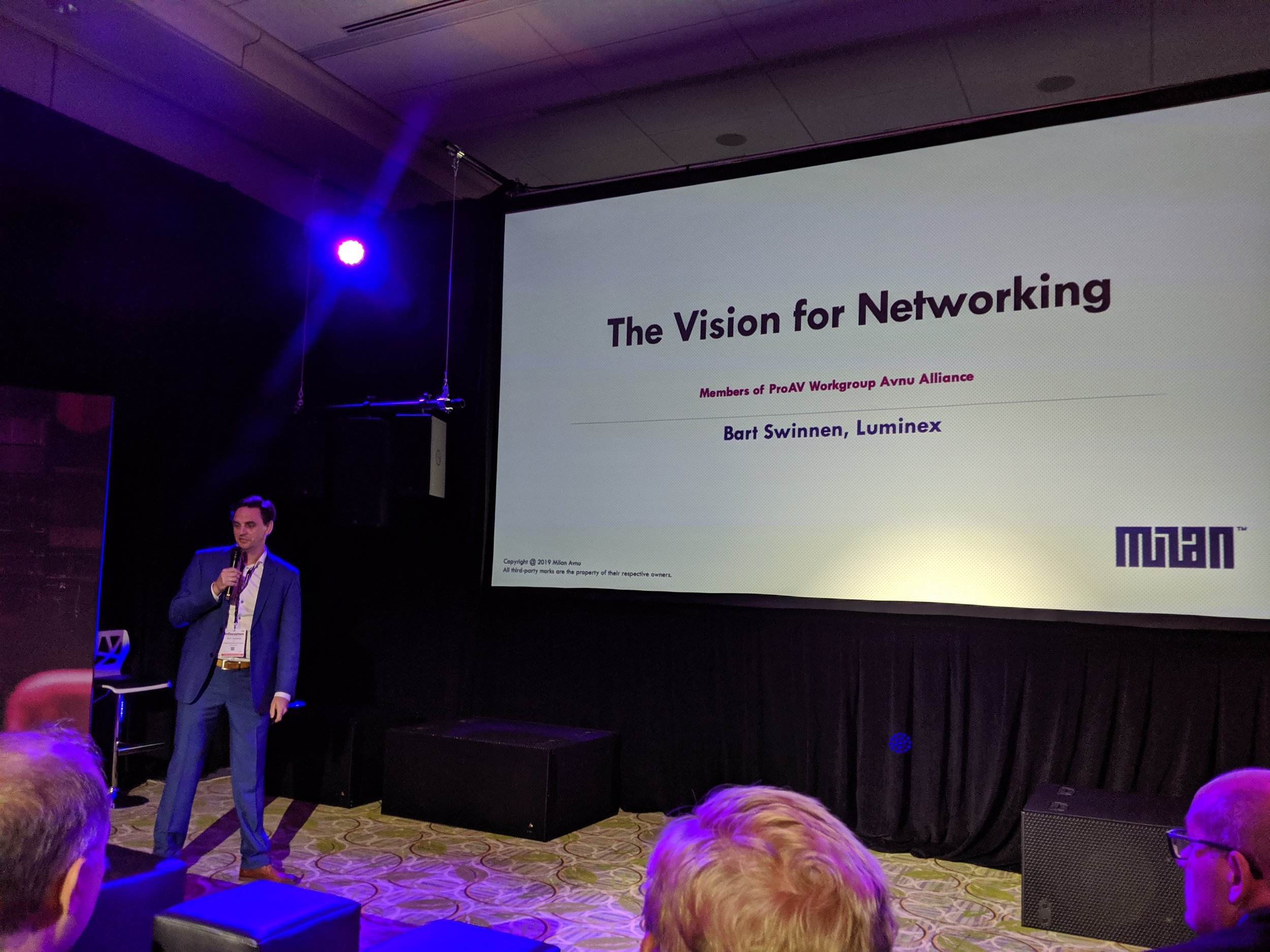
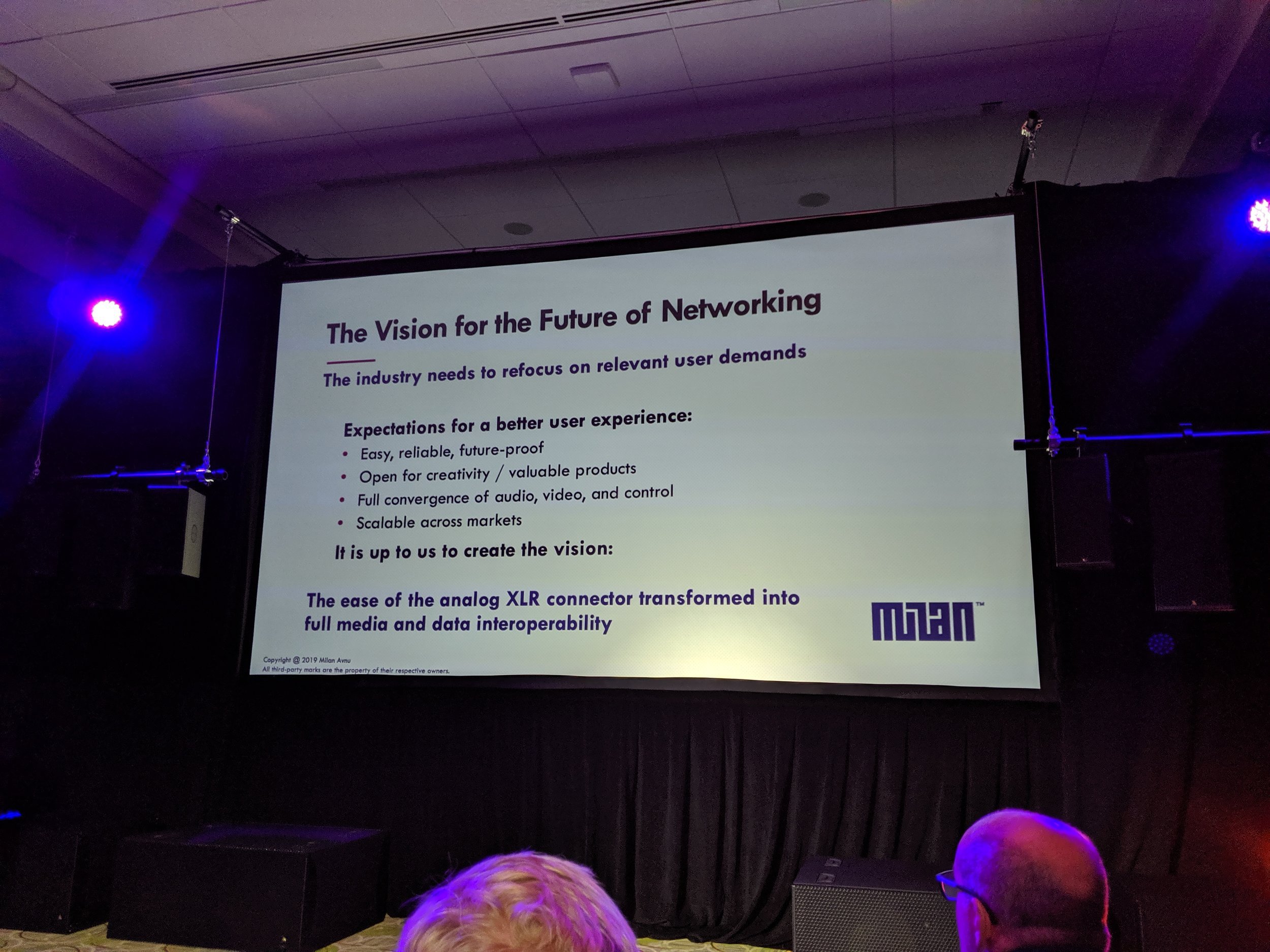

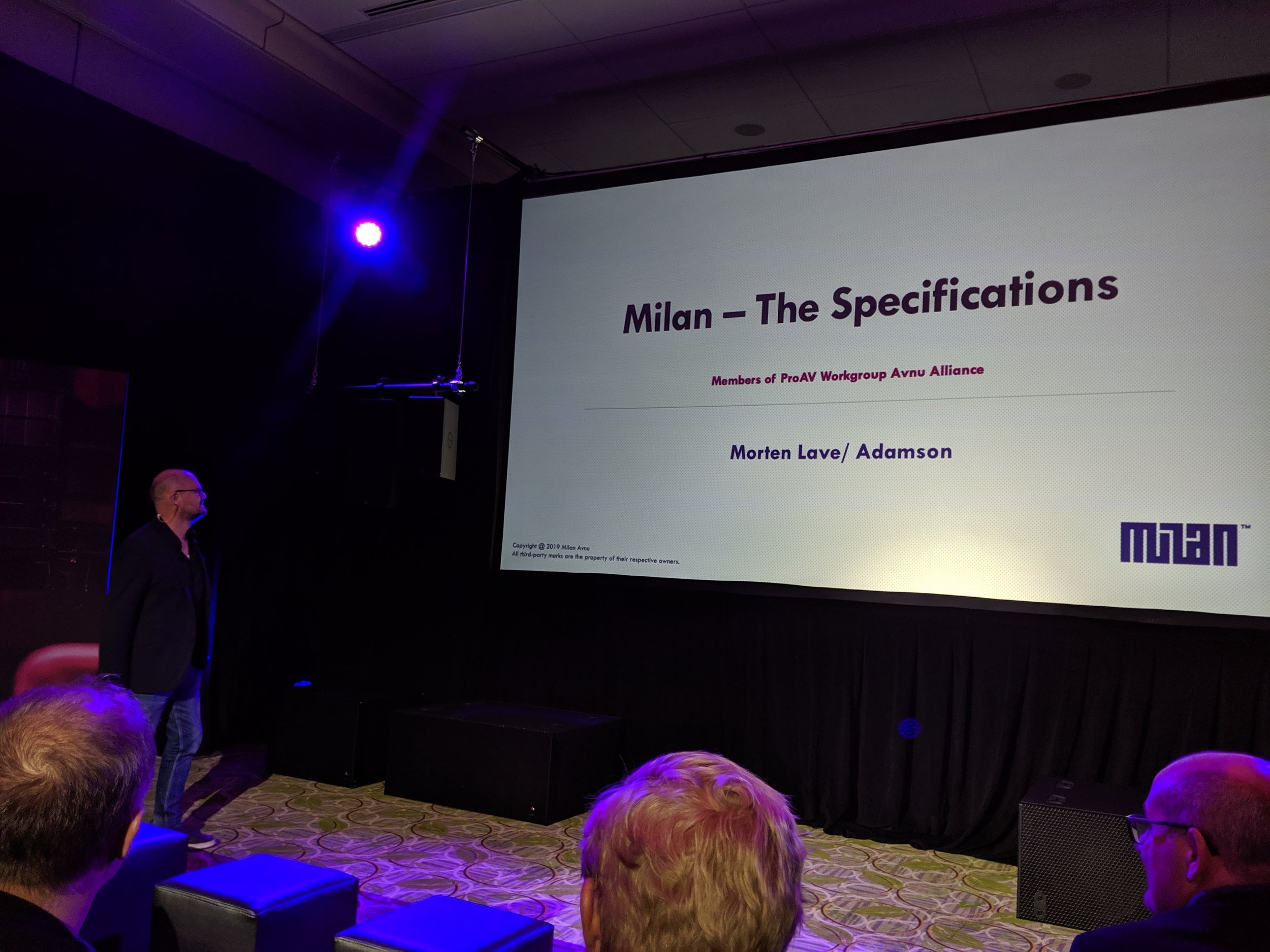
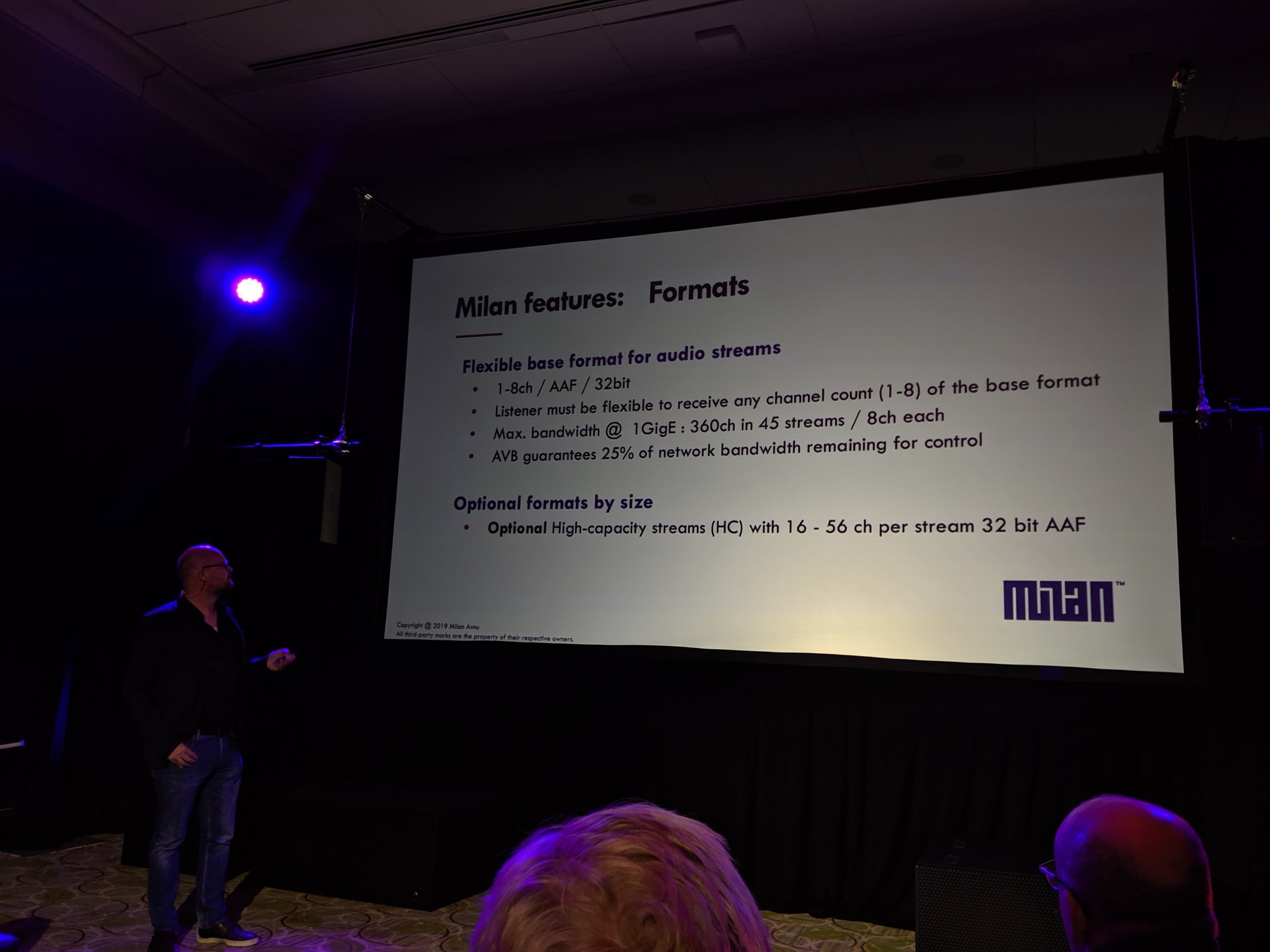
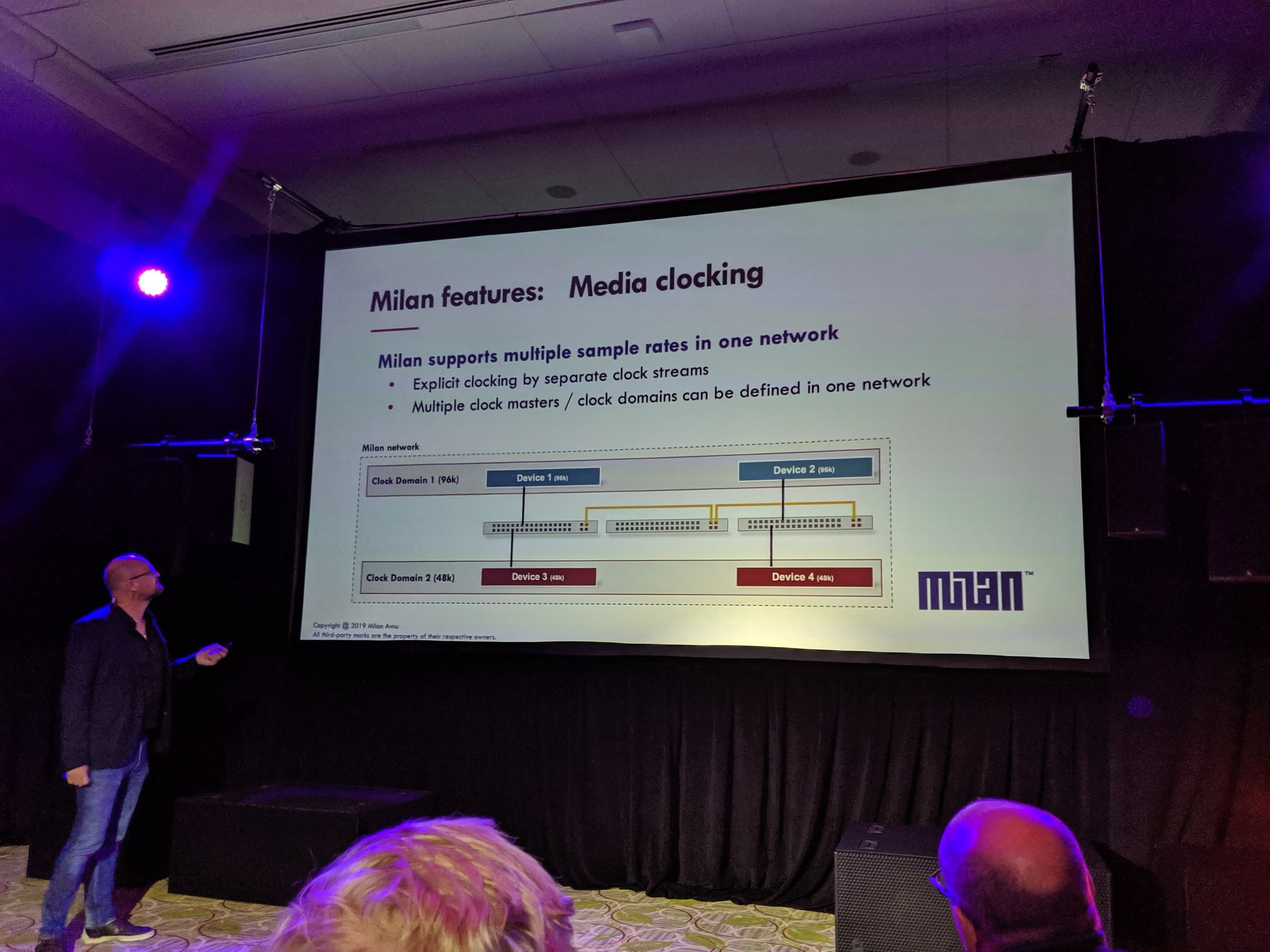
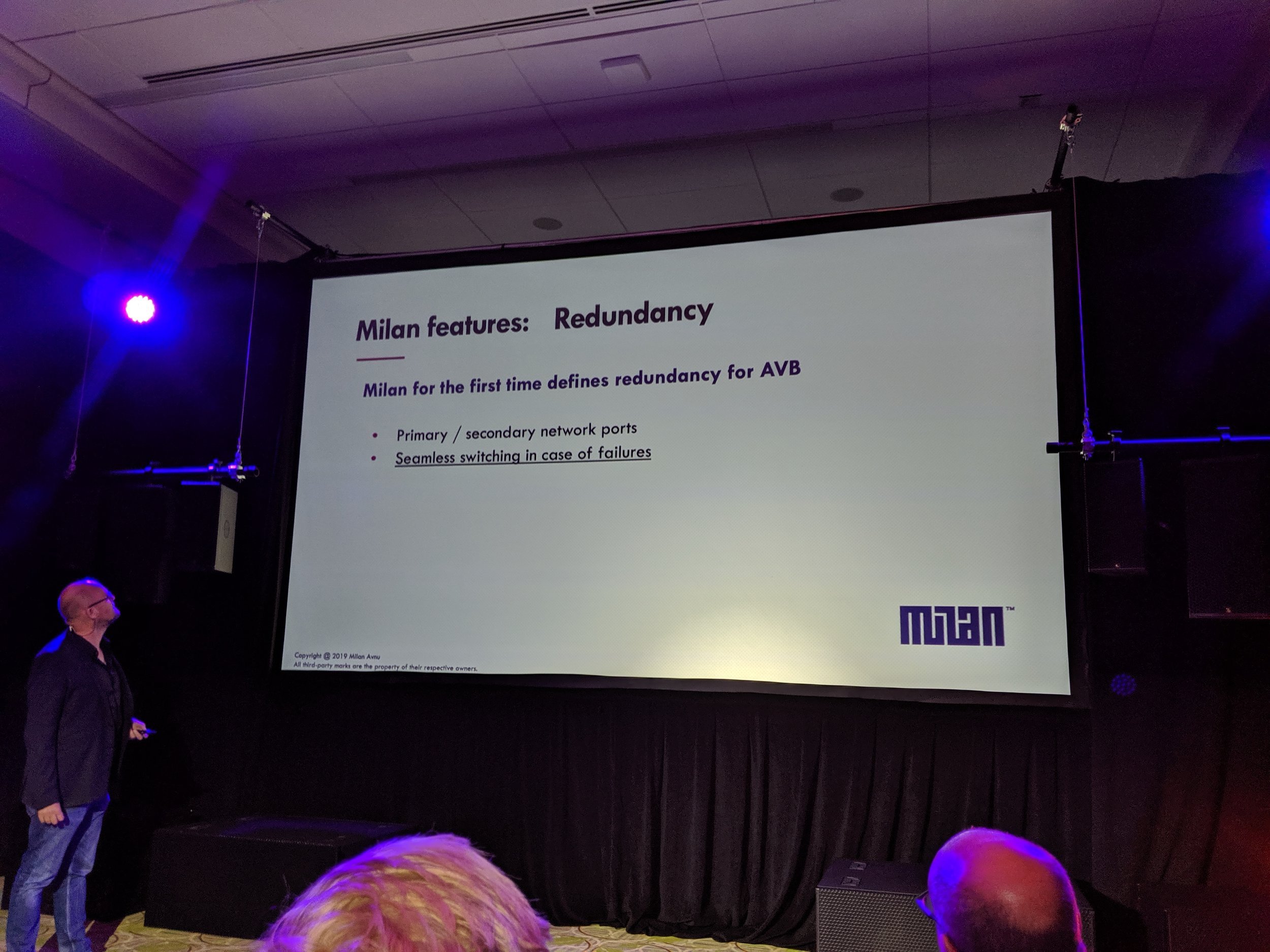
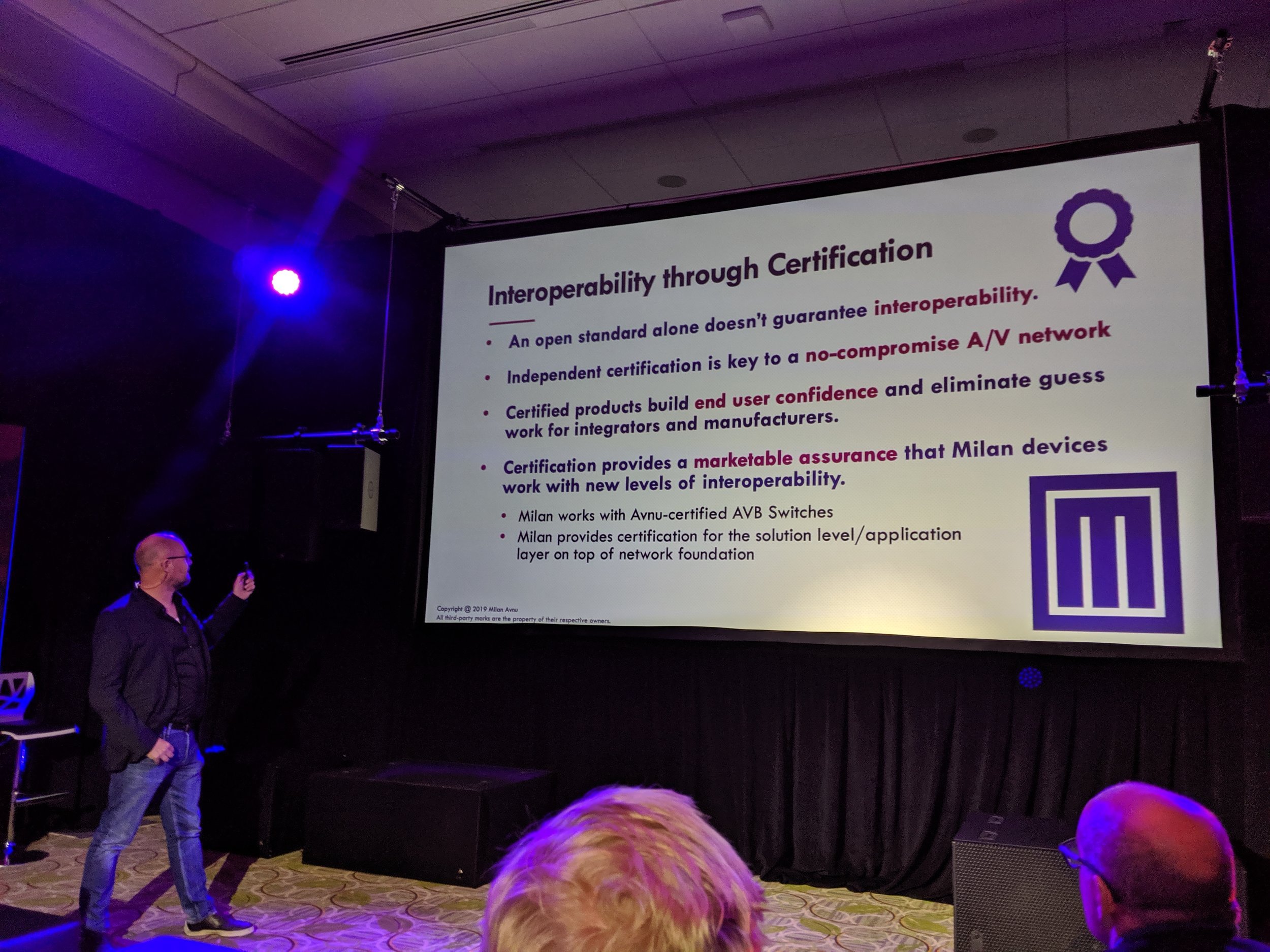
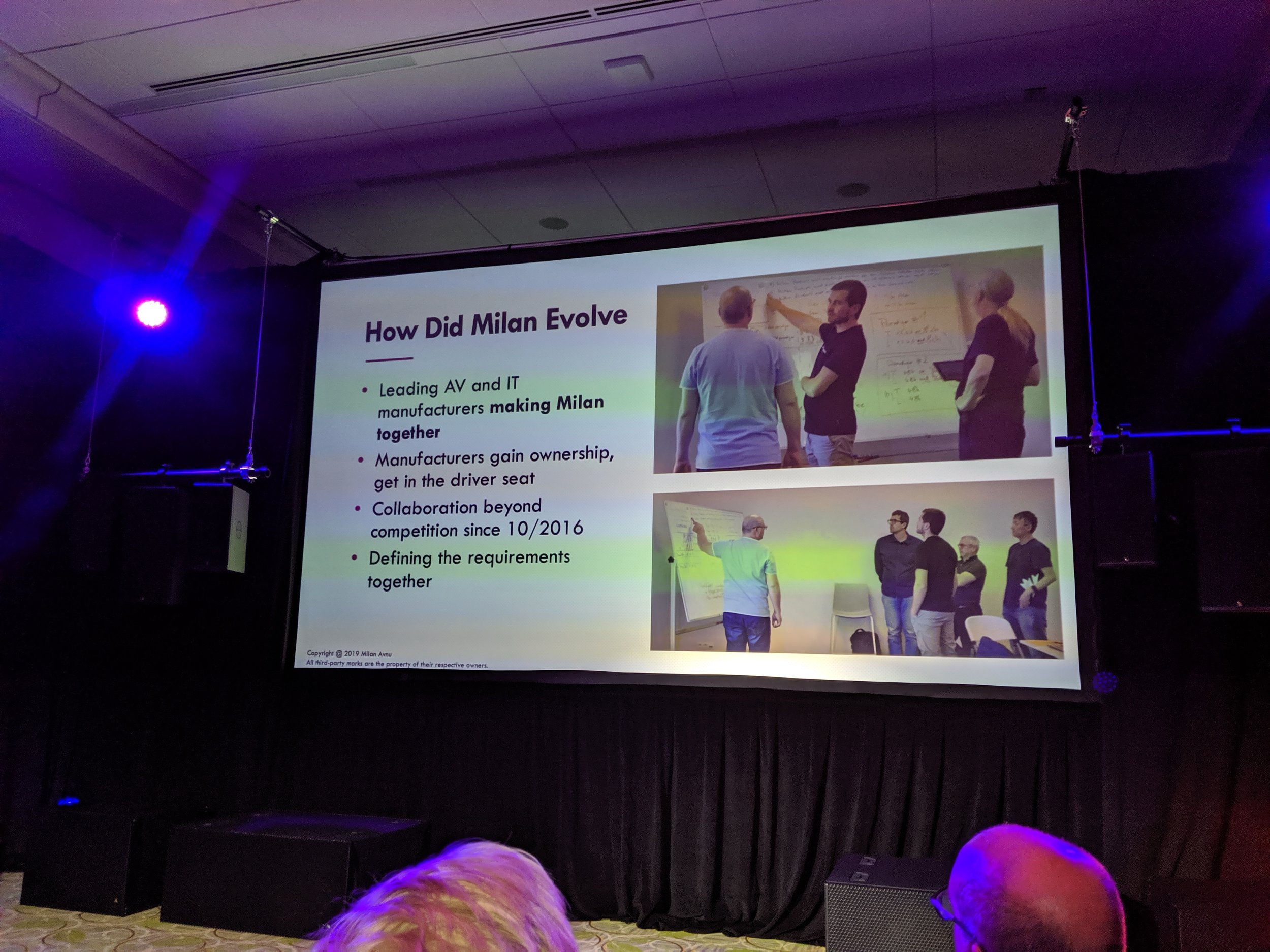
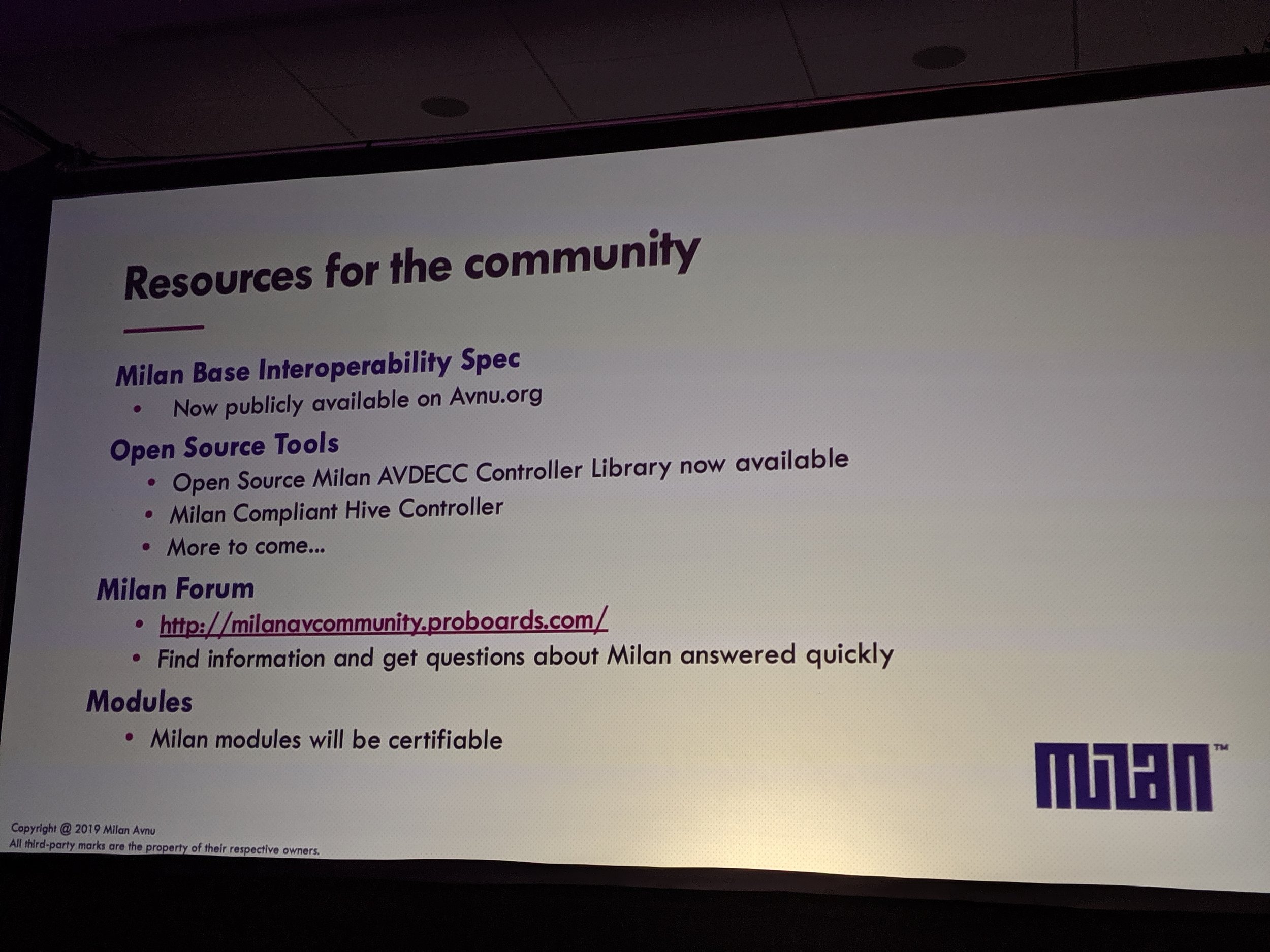
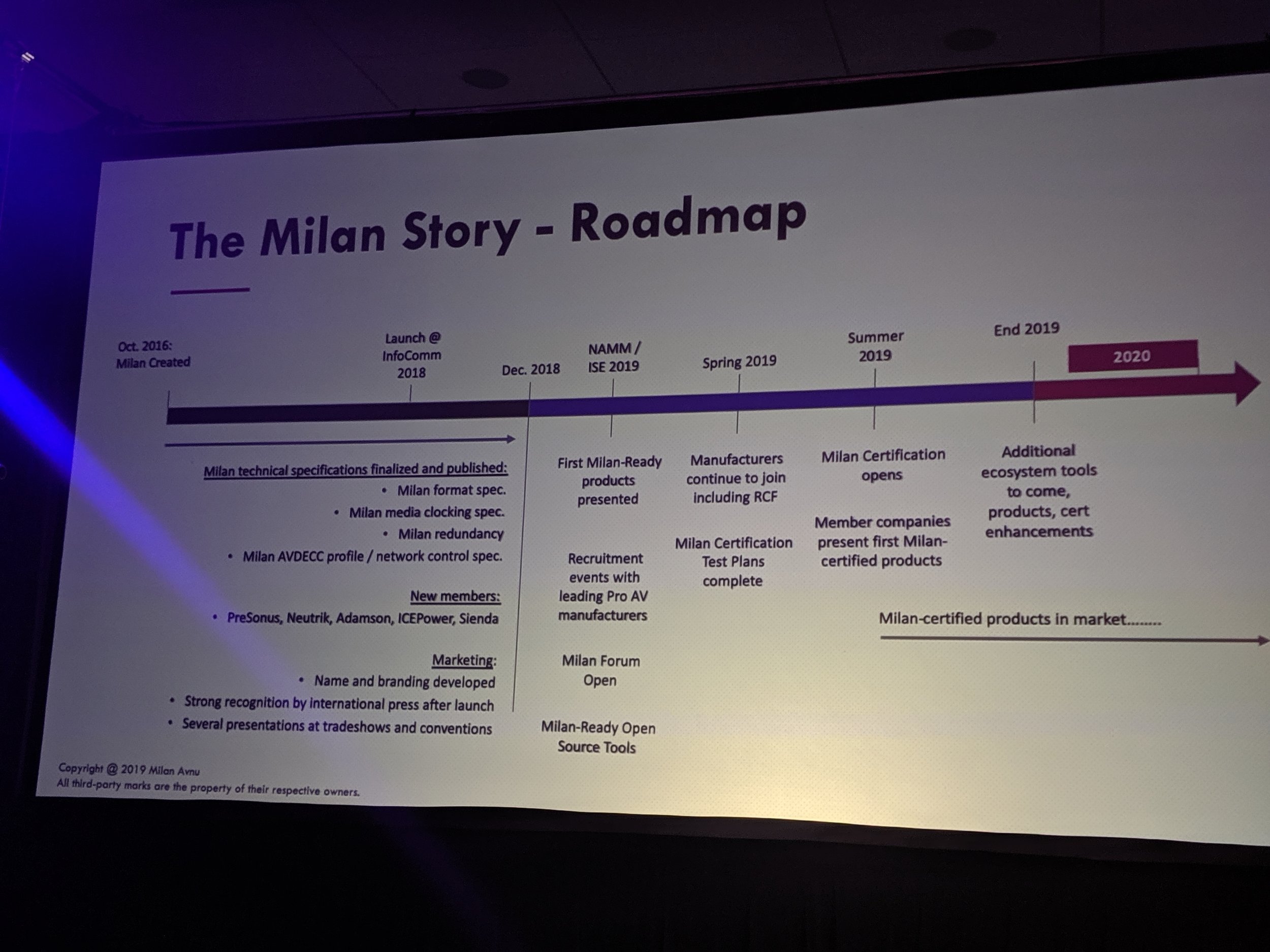
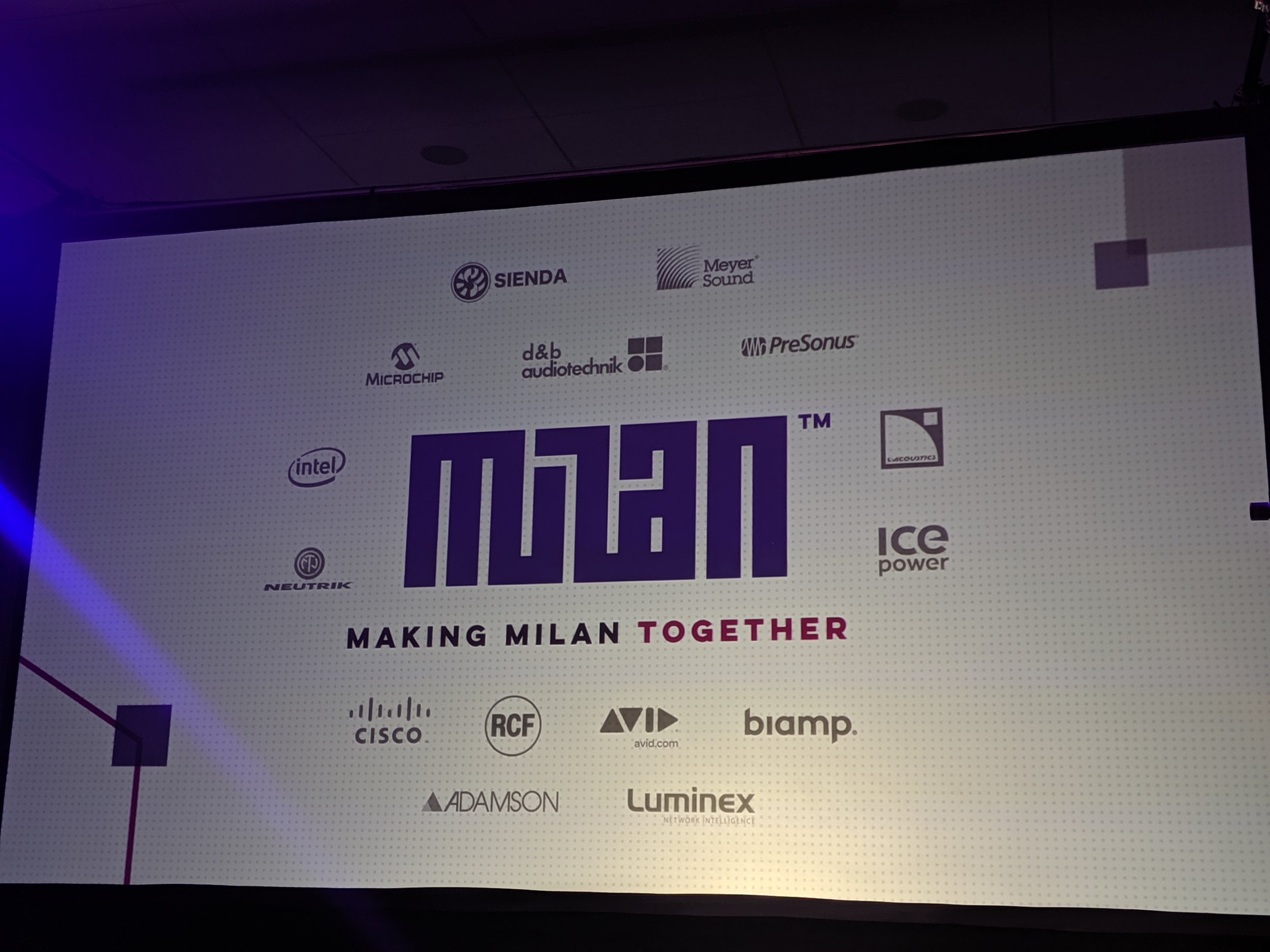
I get it—if these manufacturers don’t want to be tied to a third party manufacturer like Audinate, that’s fine. They view Dante as some transitional bump along the way to AVB networking nirvana. Until that happens (if ever) I wish they wouldn’t act like the competing technology doesn’t exist. Those of us out here on the front lines are the ones who are going to be cobbling together products from a bunch of different manufacturers; we can do that easily today with Dante licencees.
At my school, we have two Yamaha CL5’s; due to our unending budget crisis, those consoles will likely be in place until they die. Given my experience with Yamaha products, that’s going to be 15-20 years; that means we are using Dante for the next 15-20 years. So I asked at the Milan presentation, “Hey my school owns a Yamaha CL-5, if I buy your speakers how should I get signal to your processor?” The answer: Yamaha should support Milan (of course they could make an expansion card but with their structural commitment to Dante even that seems unlikely to me) or I’d have to use some sort of unspecified converter box.
Meanwhile, Audinate continues on (and speaking with their outgoing President, he told me that they have 60 (!) full time developers) and showed product of what they were demoing in concept last year—video over a gigabit Dante network, synced tightly with audio on the same network:
This is really cool.
In other networking news, Luminex was showing their new Milan capable switches which look pretty cool:



